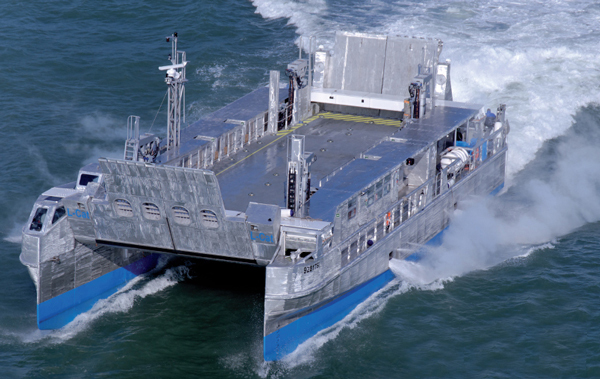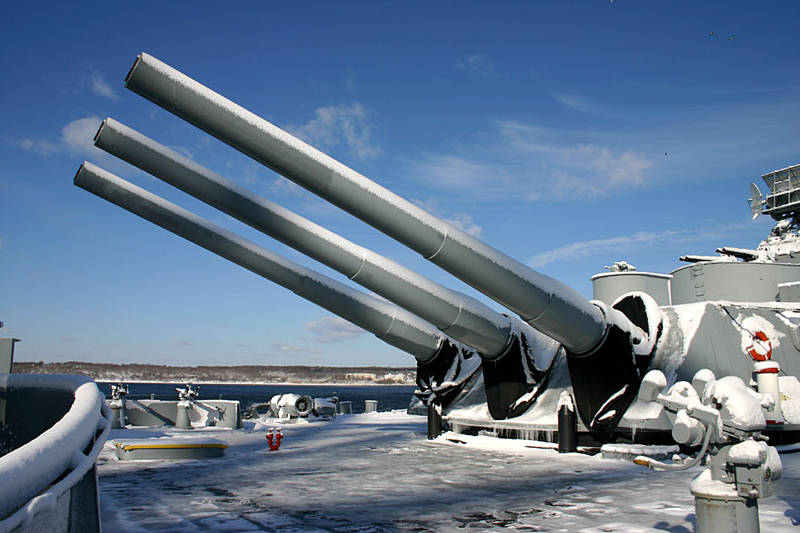
Welcome to MSW’s Scuttlebutt! Here’s the news for the day.

Dixmude BPC and EDA-R: Responding to New Expeditionary Requirements
Source: French defense procurement agency
On 17 September in Saint-Nazaire the Dixmude, the French navy’s third Bâtiment de Projection et de Commandement (BPC) ship, was set afloat. Decided in late 2008 as part of the government’s economic recovery plan, this vessel was contracted in just four months by the Directorate General of Armaments (DGA) to the DCNS-STX shipbuilding joint venture.

"We incorporated minor changes requested by operational users to refine an already successful design,” says Patrick Le Garsmeur, BPC Program Director at DGA’s naval weapons management unit. “BPCs have widely proved their capabilities, with very positive feedback from the Navy on force projection, joint forces command and humanitarian assistance missions.”
Their performance and design maturity have aroused the interest of many countries’ navies.
To complement these operational capabilities, DGA in 2003 launched studies of a fast amphibious landing craft (EDA-R) to replace the old landing barges and craft. In 2009, the L-CAT (landing catamaran) concept developed on its own funds as a private venture by the French manufacturer CNIM was selected.
Operating from the BPC’s well deck, the EDA-R can perform a large number of rapid transits to the coast and back, thus preserving the security of the ship which remains safely beyond the horizon.
"Testing of the prototype has validated this revolutionary concept of a transformer vessel,” says Ronan Minguy, manager of amphibious landing and public service vessels at UM NAV. “It is a catamaran in the transit mode but thanks to its lifting platform, transforms into a flat-bottomed vessel for beaching and docking.”
“This roll-on, roll-off vessel has a payload of 80 metric tonnes at a speed of 18 knots loaded and above 25 knots when empty. Its ability to generate logistic flows will be about 5 times greater than that of current landing craft, and it can beach on about 90% of coastal sites, thereby freeing port infrastructure."
Many foreign navies have shown an interest in this innovative craft.
General Dynamics NASSCO Lays Keel of Future USNS Medgar Evers (T-AKE 13)
Source: General Dynamics NASSCO
SAN DIEGO --- General Dynamics NASSCO today laid the keel for USNS Medgar Evers, the thirteenth ship of the Lewis and Clark class of dry cargo-ammunition ships (T-AKE). The ship is named in honor of Medgar Evers, the African American civil rights activist whose 1963 murder prompted President John F. Kennedy to ask Congress for a comprehensive civil rights bill.
Mrs. Gina Buzby, wife of Rear Admiral Mark H. Buzby, commander, Military Sealift Command, was the honoree for the keel-laying ceremony. Mrs. Buzby authenticated the keel of T-AKE 13 by welding her initials onto a metal plate which will be permanently affixed to the ship.
Construction of the Medgar Evers began in April 2010. When T-AKE 13 joins the fleet in the first quarter of 2012, the 689-foot-long ship will be used primarily to stage U.S. Marine Corps equipment abroad and to deliver as much as 10,000 tons of food, ammunition, fuel and other provisions at one time to combat ships at sea. T-AKE vessels are also well-equipped for use in humanitarian aid missions, as seen recently with the deployment of USNS Lewis and Clark (T-AKE 1) as a supply bridge for U.S. and humanitarian relief coalition ships providing disaster relief in Pakistan following the worst flooding in that nation's history.
In another recent milestone, General Dynamics NASSCO began construction of the fourteenth T-AKE ship on October 21. The yet unnamed T-AKE 14 is scheduled to be delivered to the U.S. Navy in the fourth quarter of 2012. General Dynamics NASSCO has already delivered the first 10 T-AKE ships to the U.S. Navy's Military Sealift Command.
"These ships must first and foremost have robust performance across a range of challenging operating conditions," said Fred Harris, president of General Dynamics NASSCO. "They must also be affordable for the Navy and the citizens they are intended to serve. During the construction of the four remaining T-AKE ships, our team will continue to pursue cost reduction and efficiency improvements at every opportunity through our Lessons Learned, Lean Six Sigma and Process Improvement Initiative programs. We shipbuilders are responsible for the efficiency of our shipyards and must sustain a culture of process improvement in order to remain competitive."
NASSCO has implemented a number of improvements since launching the Lewis and Clark to help drive down costs and improve quality, as part of its continuing commitment to the efficient production of world-class ships for the U.S. Navy. These improvements include facility investments, workforce training and capturing and applying lessons learned.
For example, design enhancements feature an electronic sensor-triggered fire extinguishing system that eliminates a mechanical arrangement. This results in fewer parts, higher reliability and lower costs. These highly-capable auxiliary ships also incorporate international marine technologies and commercial ship-design features, including an integrated electric-drive propulsion system, to minimize operating costs over their projected 40-year service lives so they are affordable for the U.S. Navy.

The Naval Battle of Casablanca
Today’s is the anniversary of the The Naval Battle of Casablanca.

The Trent Affair
Today’s website is The Trent Affair. Enjoy.
This Day in U.S. Naval History
1861 - Capt. Charles Wilkes seizes two Confederate diplomats from the British steamer Trent, causing an international controversy with Great Britain (known as the Trent Affair).
1942 - Operation Torch (Allied landings in French Northwest Africa). American forces land at Casablanca. French naval forces attack U.S. Navy ships and 13 French ships are sunk without a loss to the U.S.
1956 - Navy Stratolab balloon (Lt. Cmdr. Malcolm D. Ross and 2Lt. Cmdr. M. Lee Lewis) better world height record soaring to 76,000 feet over Black Hills, S.D., on flight to gather meteorological, cosmic ray, and other scientific data.
1975 - More than 100 Sailors and Marines from USS Inchon (LPH 12) and USS Bagley (DE 1069) fight a fire aboard a Spanish merchant vessel at Palma.
Photo of the Day

The rear 16" guns of USS Massachusetts.
Gator











